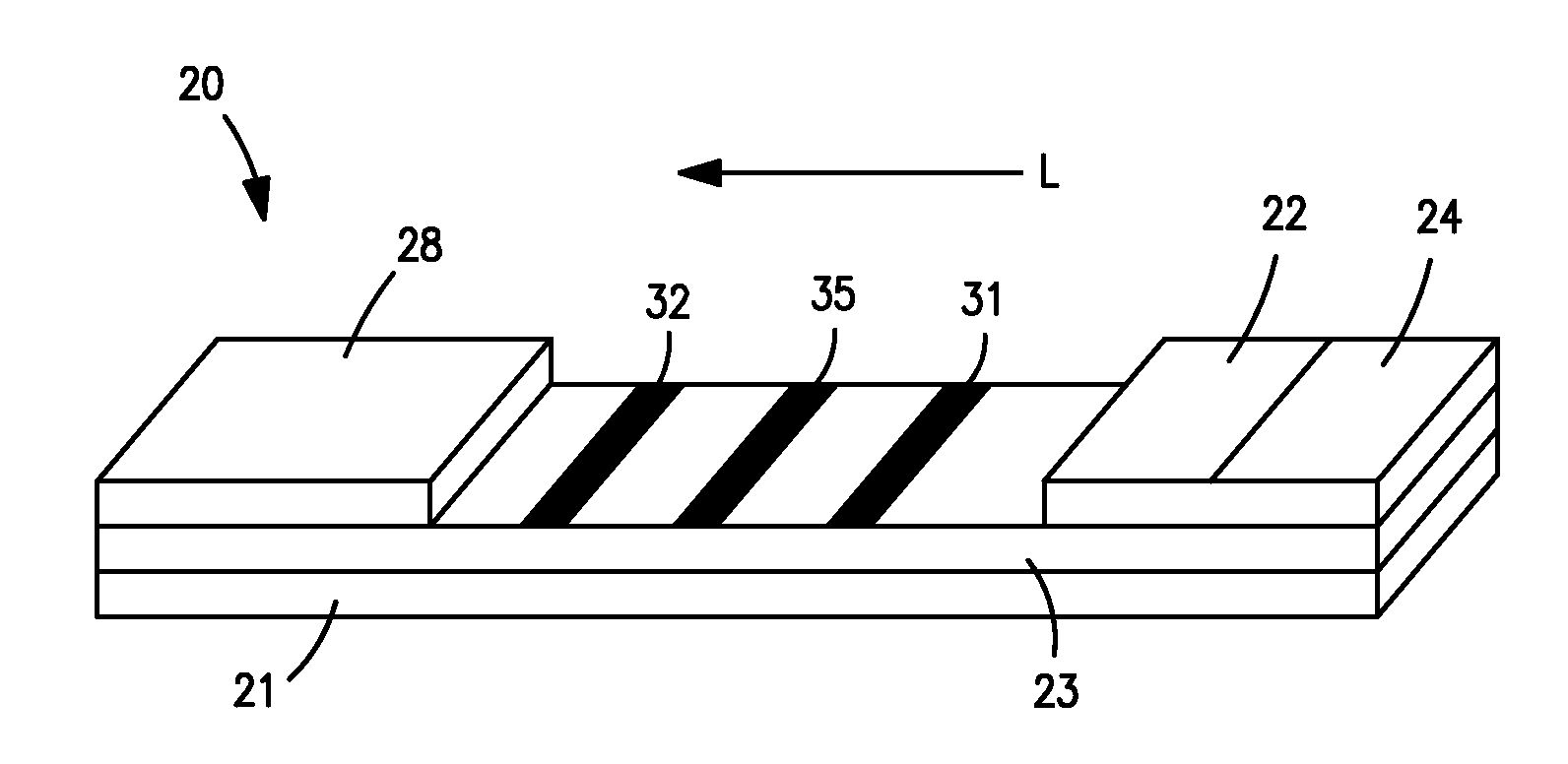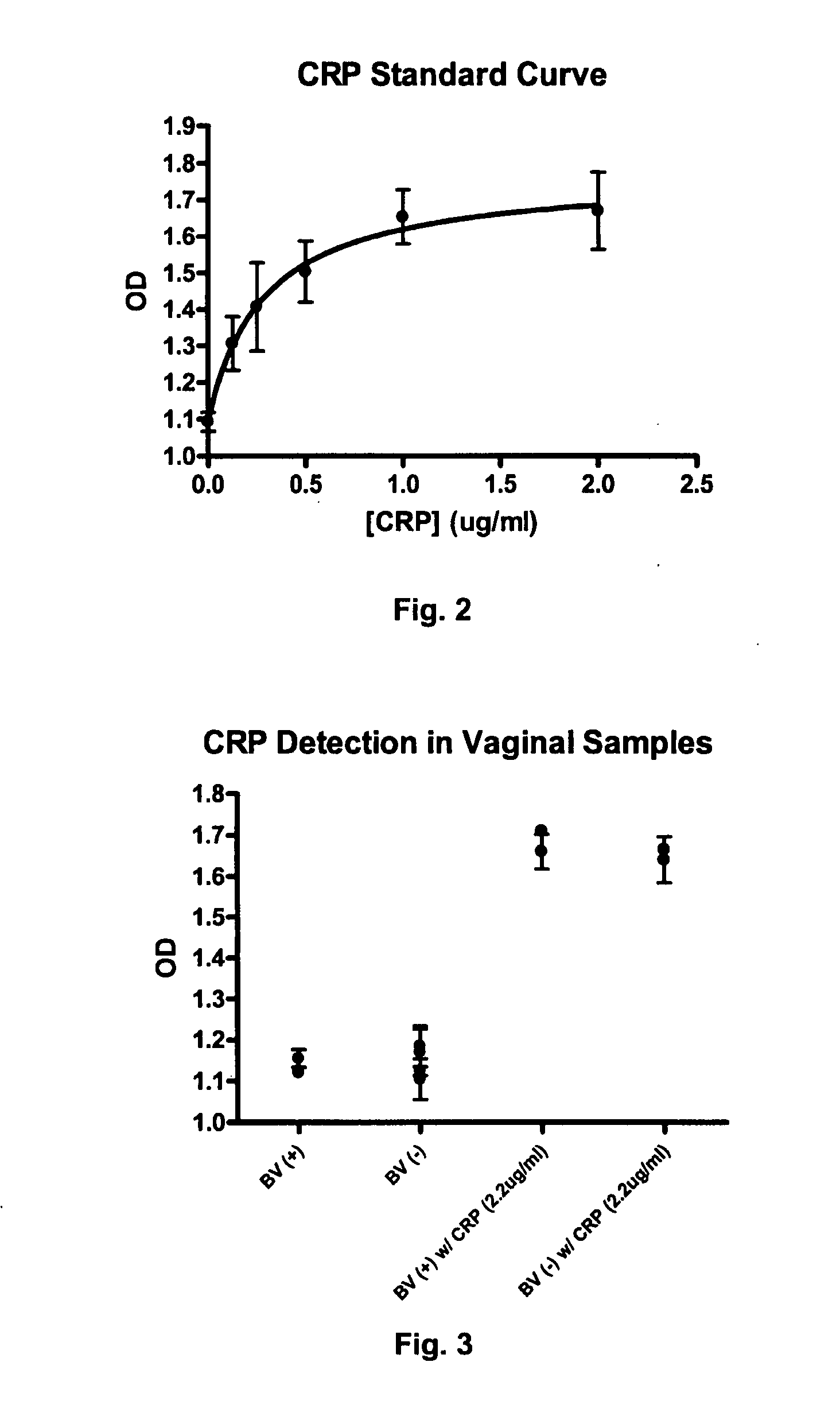Method for predicting or identifying the onset of premature membrane rupture during pregnancy
a technology of amnichorionic membrane and onset of pregnancy, which is applied in the field of predicting or identifying the onset of premature membrane rupture during pregnancy, can solve the problems of increasing the risk of intrauterine infection, and increasing the risk of pregnancy death for the fetus and the mother
- Summary
- Abstract
- Description
- Claims
- Application Information
AI Technical Summary
Benefits of technology
Problems solved by technology
Method used
Image
Examples
example 1
[0047] CRP monoclonal antibody (CRP MAb1 from Medimix (MedixMab), clone #6404, Lot #SP-179-2) and bovine serum albumin (BSA) buffer (10 mM phosphate buffered saline and 0.2% BSA, pH 7.3) were striped on clear-backed cards of laminated nitrocellulose (Millipore HF120). Specifically, CRP MAb1 (0.75 mg / ml) was striped at a dispense rate of 1.5 μl / cm. Two (2) BSA lines were then striped 1.25 mm on either side of the CRP MAb1 line at a dispense rate of 1.0 μl / cm. Finally, a single control line was striped downstream from the CRP MAb1 and BSA lines with 1.0 mg / ml CRP antigen (Scipac #P100-0, Lot #1049-20) at a dispense rate of 1.0 μl / cm. After striping, the cards were dried in an oven at 37° C. for 60 minutes. The cards were then assembled with an absorptive sink (Millipore CFSP203000) and a glass fiber conjugate pad (Millipore GFCP203000) pre-striped with three bands of gold particles conjugated with CRP antibody (MAb1). The conjugated particles had an optical density (“OD”) of 3.3. The ...
example 2
[0048] CRP levels were measured as described in Example 1 in vaginal samples that were known to be both positive and negative for bacterial vaginosis (“BV”) based on clinical trials conducted on non-pregnant women. Some of the vaginal samples were also spiked with CRP (2.0 μg / ml) for purposes of comparison. In addition to CRP, amine tests were also performed. More specifically, 50 μl of vaginal fluid or standards of putrescine hydrochloride solutions (5, 2.5, 1.25, 0.625, 0.312, 0.1506, 0.075, and 0.0 mg / ml) were placed in a microtiter plate wells. Thereafter, 100 μl of both a phenol-nitroprusside solution (10 mg of sodium nitroprusside and 2 ml of saturated phenol (from Sigma) in 18 ml of water) and a sodium hydroxide-hypochlorite solution (3 ml of Clorox™ bleach in 17 ml of ˜0.1N sodium hydroxide) were added to the well. The resultant solution was incubated for 10 minutes and read at 630 nanometers using microplate reader. Amine concentration of vaginal fluids was determined by a ...
PUM
| Property | Measurement | Unit |
|---|---|---|
| diameter | aaaaa | aaaaa |
| diameter | aaaaa | aaaaa |
| length | aaaaa | aaaaa |
Abstract
Description
Claims
Application Information
 Login to View More
Login to View More - R&D
- Intellectual Property
- Life Sciences
- Materials
- Tech Scout
- Unparalleled Data Quality
- Higher Quality Content
- 60% Fewer Hallucinations
Browse by: Latest US Patents, China's latest patents, Technical Efficacy Thesaurus, Application Domain, Technology Topic, Popular Technical Reports.
© 2025 PatSnap. All rights reserved.Legal|Privacy policy|Modern Slavery Act Transparency Statement|Sitemap|About US| Contact US: help@patsnap.com



